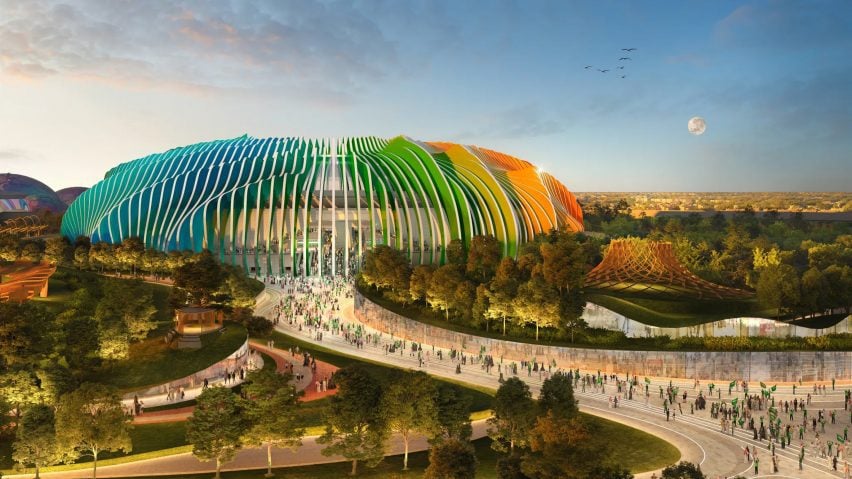
Saudi Arabia reveals all 15 stadiums for the 2034 World Cup
Saudi Arabia has unveiled the stadiums that will host games at the World Cup in 10 years time, including a venue built on The Line at Neom and a stadium informed by the bark of a tree.
Revealed as part of its official bid submission to FIFA, the 15 stadiums will be based in and around four cities – Riyadh, Jeddah, Al Khobar and Abha, as well as the under-construction The Line.
In total 11 new stadiums are planned for the World Cup, with three currently under construction. The country's two current largest stadiums will be renovated, while two further existing stadiums will be temporarily expanded during the tournament.
FIFA is set to confirm Saudi Arabia as the host for the 2034 event in December, with the country the only bidder for the event.
Read on for details of the 15 stadiums set to host games at the 2034 World Cup:
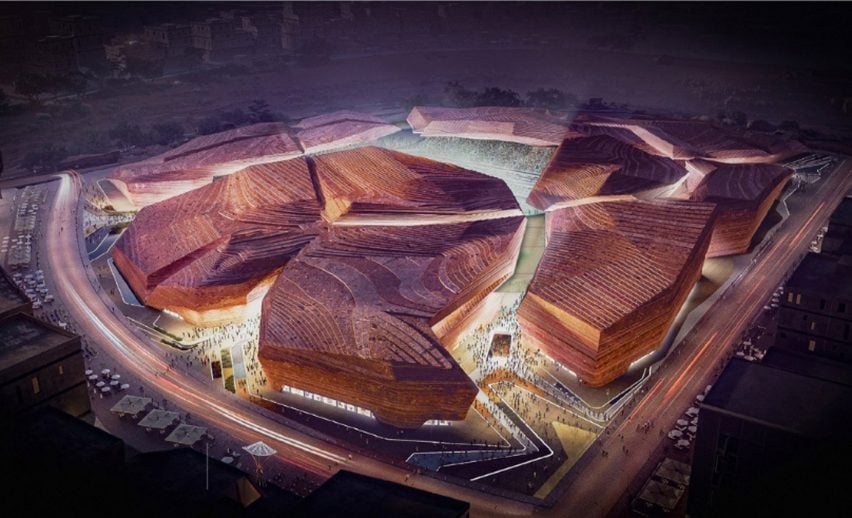
New Murabba Stadium, Riyadh, unknown architect
Informed by the bark of an acacia tree, the New Murabba Stadium will be surrounded by numerous rock-like forms divided by canyons.
"Its design replicates the layered overlapping planes and peeling planar texture of the bark of the native acacia tree," according to the bid document.
The 45,000-seat stadium will form part of the Murabba downtown development, which is being created in the northwest of Riyadh. The development will also include a 400-metre-high cube-shaped skyscraper named Mukaab.
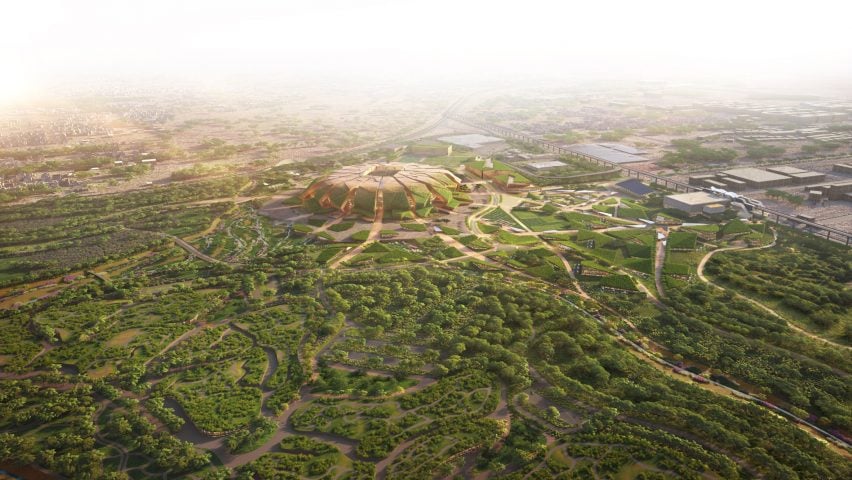
King Salman International Stadium, Riyadh, by Populous
Set to host the World Cup final, the King Salman International Stadium will be the country's largest stadium when it completes.
Designed by architecture studio Populous, which is creating several venues for the tournament, the stadium in Riyadh will have a capacity of 92,000. Its design was informed by mountains and renders show landscaped panels enclosing the structure.
"The stadium will blend into its surrounding topography, with terrain and natural habitat forming part of the stadium's roof," said the official submission.
"Aside from its aesthetic appeal, this design will provide effective shading and ventilation tailored to the desert climate."
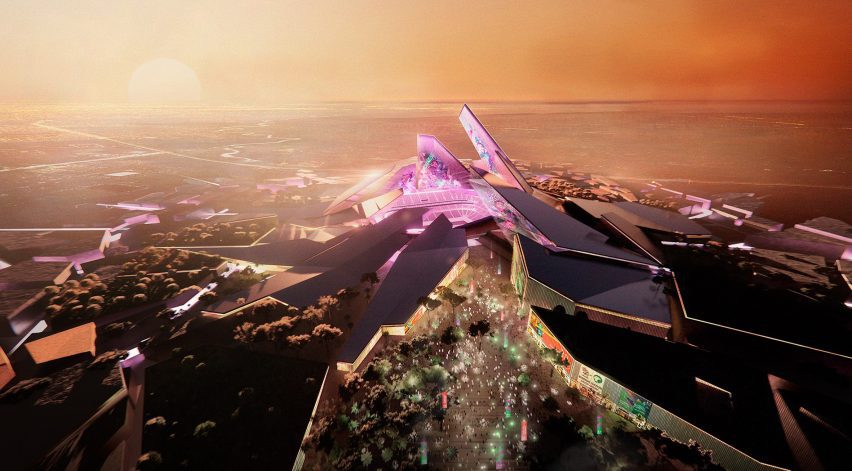
Roshn Stadium, Riyadh, unknown architect
Designed to resemble numerous crystal-like shards rising into the air, the Roshn Stadium will be built to the south of Riyadh as part of a wider residential neighbourhood.
"The stadium is designed as a dynamic part of the urban fabric, encouraging the community to walk around and through the facility," the bid stated.
It will sit in a central plaza, surrounded by the bowl's 'crystalline' structure, a delicate latticework that will glow in the night sky.
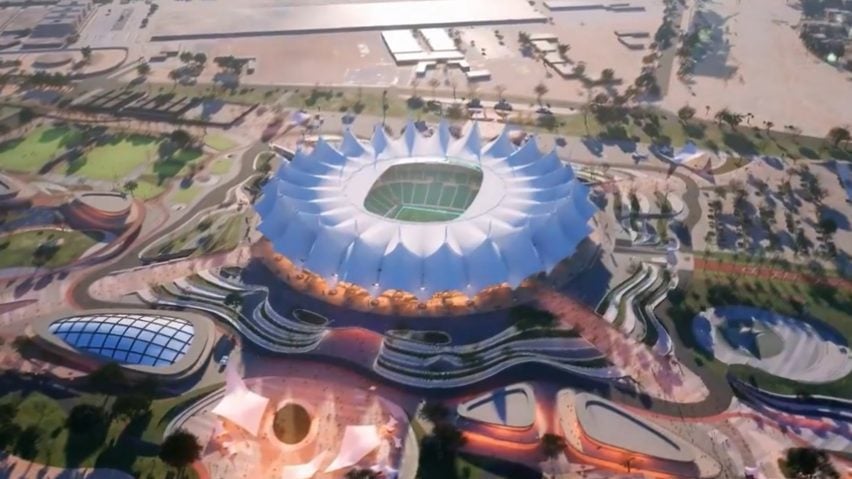
King Fahd Sports City Stadium, Riyadh, by Ian Fraser, John Roberts, Michael KC Cheah
Originally opened in 1987, the King Fahd Sports City Stadium is topped with a distinctive fabric roof supported on a series of 24 masts that are each 58 metres high.
The stadium, which is in east Riyadh, is currently being refurbished by Populous with its capacity set to increase from 58,000 to 70,000.
The renovation is expected to be completed before the AFC Asian Cup in 2027.
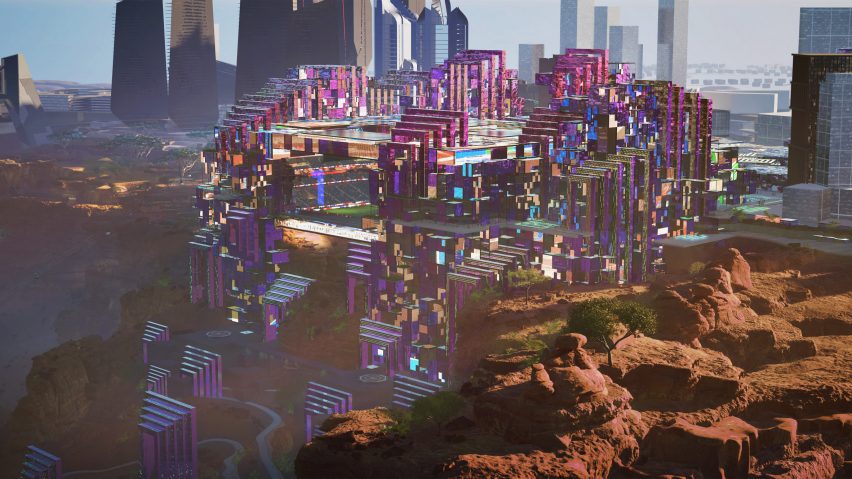
Prince Mohammed bin Salman Stadium, Riyadh, by Populous
Named after Mohammed bin Salman, the crown prince of Saudi Arabia, the stadium is planned as part of the Qiddiya entertainment district 30 kilometres from Riyadh.
The cliffside stadium will have stands on three sides with a large, retractable LED wall occupying the other side. The building will also incorporate an Olympic Museum.
"The bowl has been designed to optimise the spectator experience, featuring a unique three-sided arrangement to allow for spectacular views out towards the Tuwaiq cliffs," said the official bid.
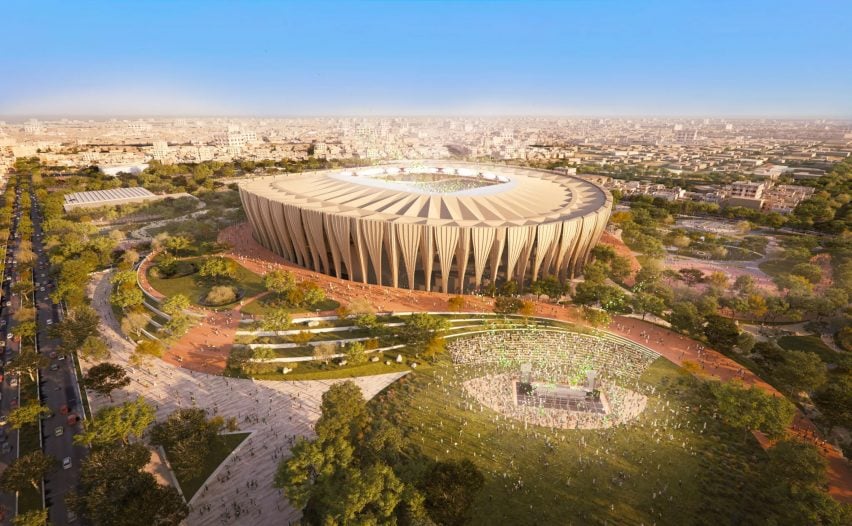
Prince Faisal bin Fahd Sports City Stadium, Riyadh, Populous
Currently under construction in the east of the city, the Prince Faisal bin Fahd Sports City Stadium will be informed by traditional architectural motifs from the country's central region.
"The stadium design draws inspiration from the 'culturally contextualized modernism' principles of Salmani architecture," said the bid document.
The stadium will be constructed using locally produced materials and will utilize energy efficient systems, including extensive solar panels on the roof."
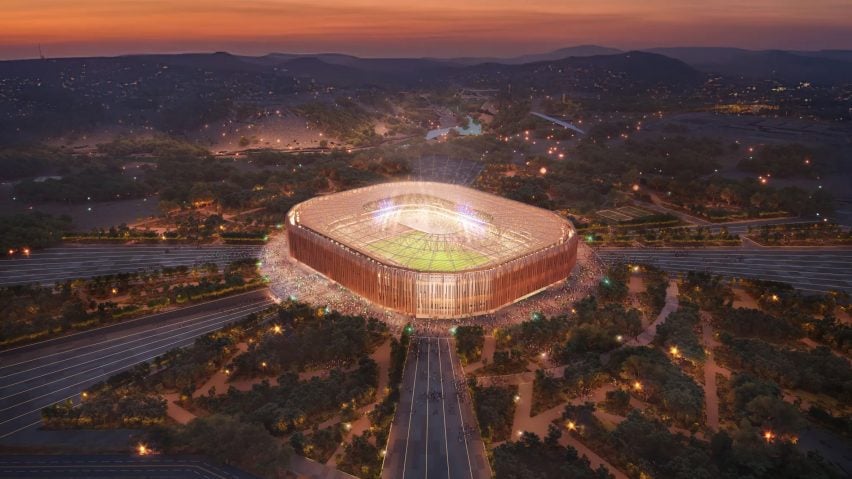
South Riyadh Stadium, Riyadh, Populous
Another stadium informed by the "principles of Salmani architecture", the South Riyadh Stadium will be located in the south of the capital – as the name suggests. It will be wrapped in numerous reddish-brown vertical fins and topped with a transparent roof.
"The facade blends modernity with the rich architectural language and material palette of the area," the bid stated.
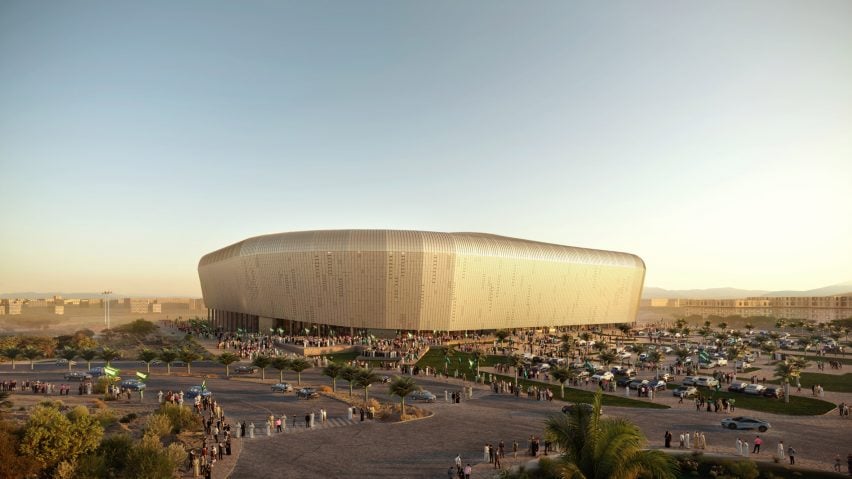
King Saud University Stadium, Riyadh, by Michael KC Cheah, renovation by Populous
One of two existing stadiums that will be temporarily expanded for the World Cup, the King Saud University Stadium will have a capacity of 46,000 during the tournament before being reduced to 33,000 after the event.
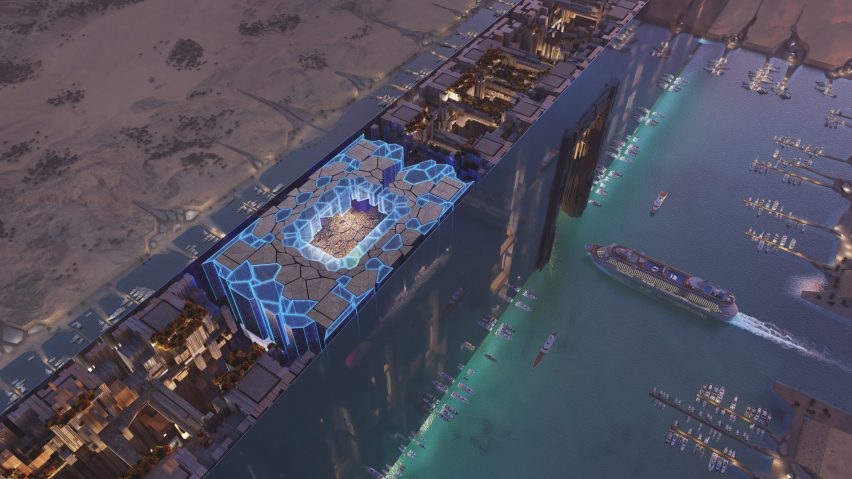
Neom Stadium, Neom, unknown architect
Described as the "most unique stadium in the world", the Neom Stadium will be incorporated into The Line mega city, which is under construction in the north west of the country as part of Neom.
"Neom Stadium will be the most unique stadium in the world," said the bid.
"With a pitch situated more than 350 meters above ground, stunning vistas, and a roof created from the city itself, the stadium will be an experience like no other."
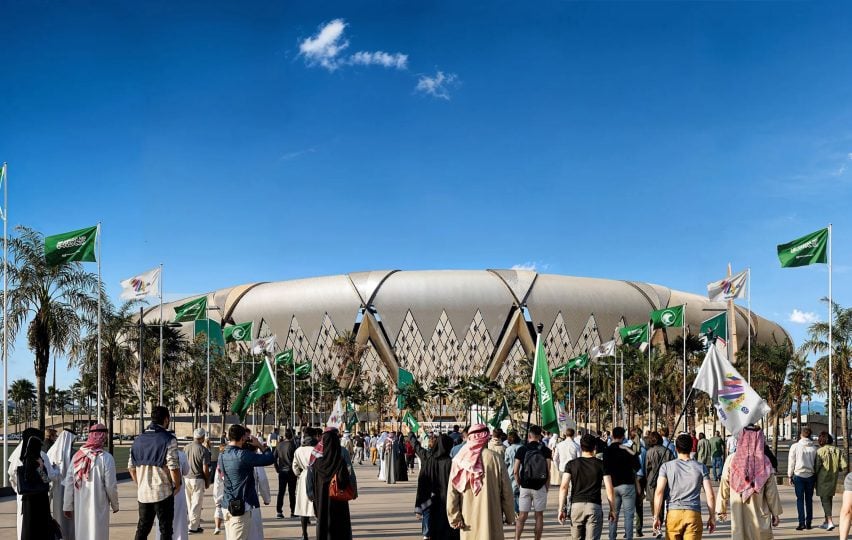
King Abdullah Sports City Stadium, Jeddah, by Arup
Opened in 2014, the 62,000-capacity King Abdullah Sports City Stadium was designed by Arup. The stadium will be refurbished ahead of the World Cup.
"Saudi Arabia's King Abdullah Sports City Stadium is an elegant, respectful and versatile complex that combines traditional Islamic architecture with innovative design to form a highly functional, sustainable and flexible building," said Arup.
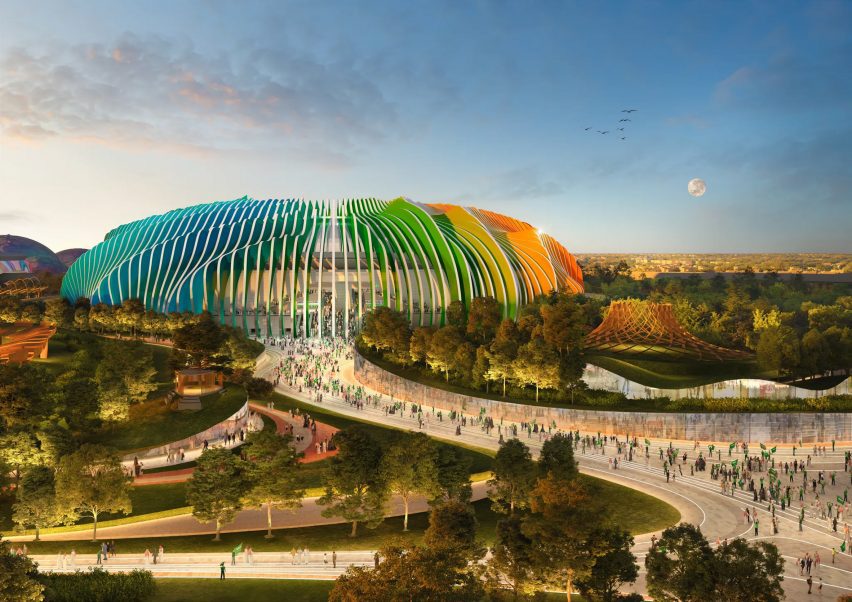
Qiddiya Coast Stadium, Jeddah, Populous
One of the most colourful stadiums being built for the World Cup, the Qiddiya Coast Stadium is being built 45 kilometres to the north of Jeddah. It will be surrounded by numerous fins that were designed to evoke the idea of a Mexican wave.
"It is designed as a physical representation of the vibrant relationship between people and water, energy and matter, with its design also evoking the ripple effect of a Mexican wave," said the bid.
"Its form undulates; its vibrant color palette is rich and joyful."
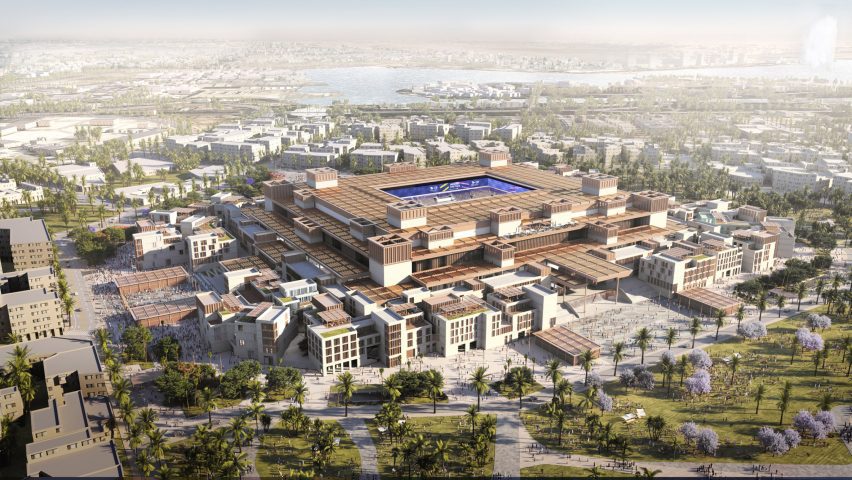
Jeddah Central Development Stadium, Jeddah, by GMP Architecten
Currently being built as one of the anchor buildings of the Jeddah Central giga project, the 45,000 seat stadium was designed by German studio GMP Architecten.
The stadiums will be entirely surrounded by buildings that make it appear to be a mass of historic structures.
"It echoes the traditional architecture of Jeddah's historic Al Balad district, while embracing technological advancements and innovative building design," said the bid document.
"It features three tiers, with an outer concourse connected to four surrounding 'villages'. The stadium bowl is fully covered by a semi-translucent roof, with a retractable inner roof and a 360-degree LED screen."
The wider development will include 17,000 homes as well as an arts centre designed by Heatherwick Studio, an opera house designed by Danish studio Henning Larsen and an oceanarium by US studio SOM.
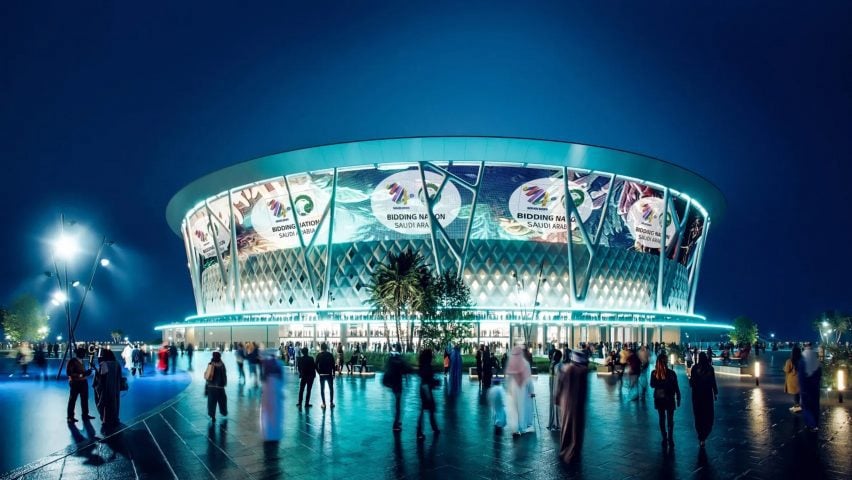
King Abdullah Economic City Stadium, Jeddah, unknown architect
Located 80 kilometres for Jeddah, the King Abdullah Economic City Stadium will form part of a planned new city on the Red Sea Coast.
The drum-shaped stadium will have a capacity of 45,000.
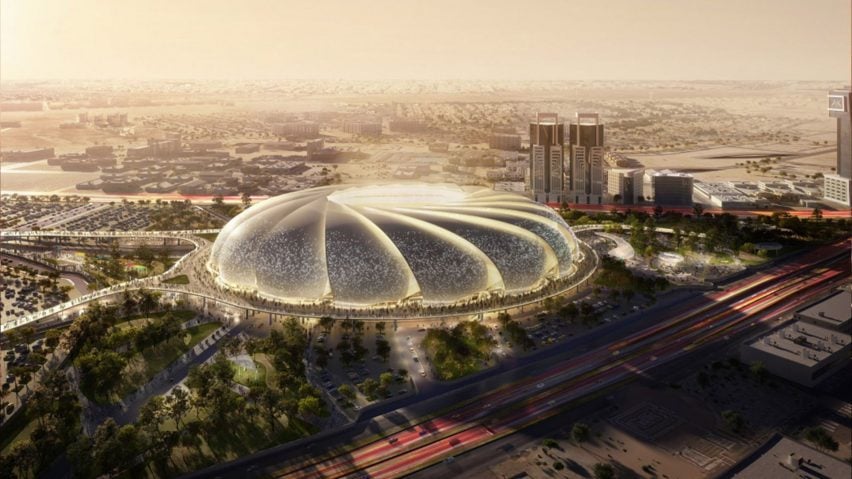
Aramco Stadium, Al Khobar, by Foster + Partners and Populous
With a concept by UK studio Foster + Partners and now being designed by Populous, the Aramco Stadium is currently under construction in the city of Al Khobar on the country's eastern coast.
Informed by the whirlpools that exist off the coast of Saudi Arabia, the 47,000-seat stadium will be covered in a series of sail-like forms. It is set to complete in 2026 and be used for the 2027 Asian Cup.
"The stadium's architecture celebrates the sea's dynamic nature and its profound influence on the local community," the official bid document.
"Its whirlpool-shaped design mimics overlapping sails and draws on graceful, natural wave motifs, to blend seamlessly with the coastal landscape."
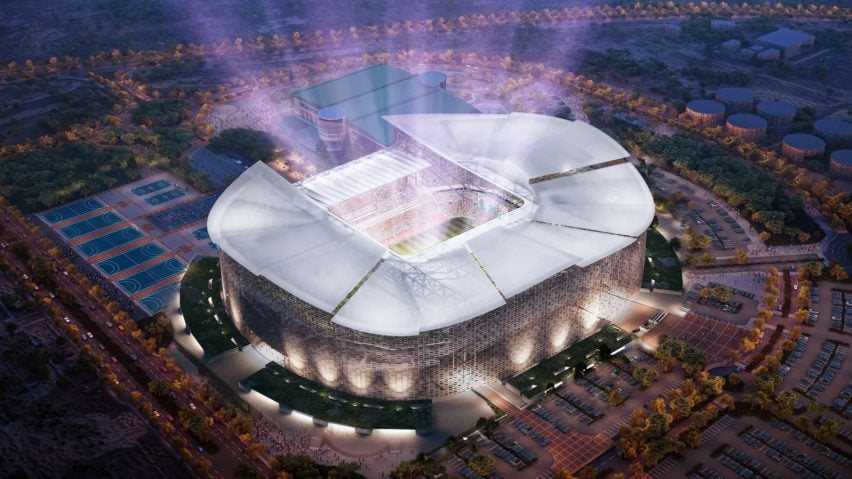
King Khalid University Stadium, Abha, renovation by Populous
Located in the southwestern city of Abha, the King Khalid University Stadium is the second existing stadium that will be expanded for the tournament.
Originally opened in 1987, the stadium currently has a capacity of 12,000, which will be increased to 45,000 during the World Cup.